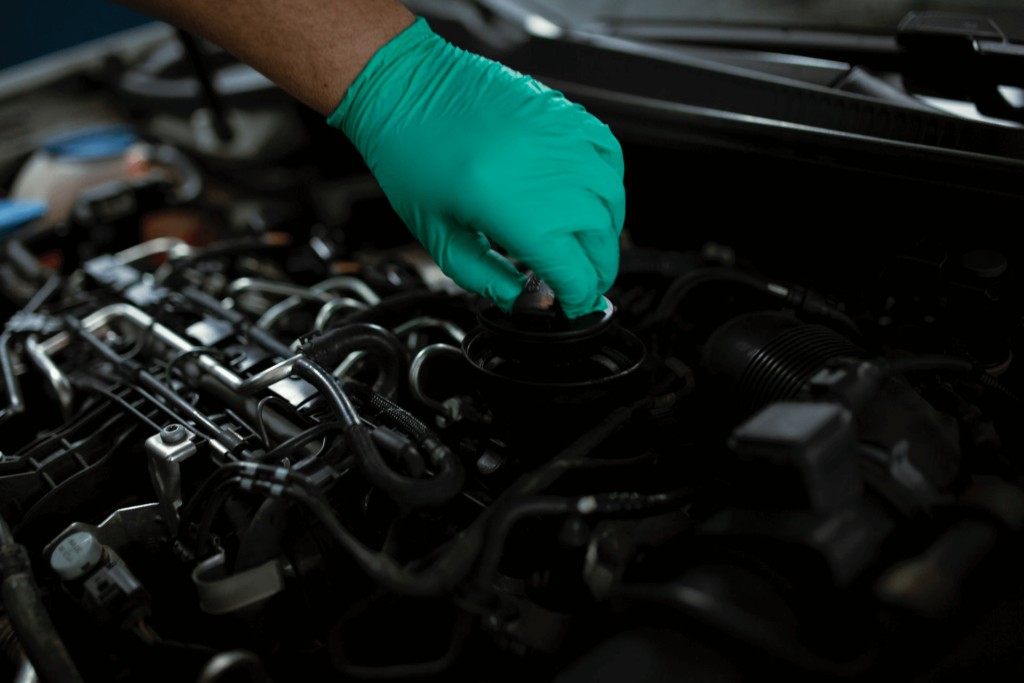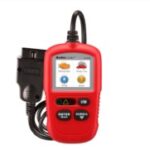Understanding your car’s dashboard is crucial for responsible vehicle ownership. Dashboard lights, while sometimes alarming, are designed to communicate important information about your car’s health. One light that often causes confusion is the “Maintenance Required” light. Unlike more urgent warning signals, this light is usually a prompt for routine service rather than immediate panic. But what exactly does it mean for your wallet when this light illuminates? Let’s dive into the costs associated with the maintenance required light and what you should know to keep your car running smoothly and avoid expensive repairs down the road.
Decoding the Maintenance Required Light: It’s Not Always a Big Repair Bill
The maintenance required light is essentially your car’s gentle reminder that it’s time for routine servicing. Think of it as a scheduled check-up notification rather than an emergency alarm. It’s different from the “Check Engine” light or the oil pressure warning light, which can indicate more serious and potentially immediate problems.
Typically, this light is programmed by car manufacturers to activate at specific mileage intervals, often around every 5,000 to 7,500 miles. This interval is generally aligned with recommended oil change schedules. When the light appears, it usually signals the need for basic maintenance tasks, such as:
- Oil Change and Filter Replacement: This is the most common reason for the maintenance required light to turn on. Regular oil changes are vital for engine lubrication and longevity.
- Tire Rotation: Rotating your tires helps ensure even wear and extends their lifespan.
- Fluid Checks: Inspecting and topping off essential fluids like coolant, brake fluid, power steering fluid, and windshield washer fluid is part of routine maintenance.
- General Inspection: A maintenance visit may also include a general check of belts, hoses, brakes, and other components.
While the maintenance required light itself doesn’t point to a specific expensive repair, ignoring it can lead to problems that do become costly.
The Cost of Ignoring the Maintenance Required Light: Paying More Later
While the maintenance required light isn’t an emergency signal, neglecting it is a gamble that can result in significantly higher car repair costs in the future. Think of routine maintenance as preventative care for your car. Just like skipping regular check-ups with a doctor can lead to more serious health issues, ignoring your car’s maintenance needs can cause escalating problems.
Here’s how ignoring the maintenance required light can increase your car repair expenses:
- Engine Damage from Old Oil: Motor oil degrades over time and mileage. Old oil loses its lubricating properties, leading to increased friction and wear and tear on engine components. This can result in engine damage, requiring expensive repairs or even engine replacement.
- Reduced Fuel Efficiency: Properly maintained engines run more efficiently. Neglecting oil changes and other maintenance can decrease fuel economy, costing you more at the gas pump over time.
- Decreased Vehicle Value: A car with a consistent maintenance history retains its value better. Neglecting maintenance can lead to a faster depreciation of your vehicle.
- Potential for Major Breakdowns: Ignoring routine checks can allow minor issues to become major problems. For example, a small coolant leak, if unchecked, can lead to engine overheating and severe damage.
In the worst-case scenario, neglecting the maintenance required light and the services it prompts can contribute to major engine failure. Engine repairs or replacements are among the most expensive car repairs you can face.
What’s the Damage? Estimating Car Repair Costs for Routine Maintenance
So, how much does car repair cost when the maintenance required light comes on? The good news is that addressing the light promptly usually involves relatively affordable routine maintenance. Here’s a breakdown of typical costs for common services triggered by the maintenance required light:
- Oil Change and Filter Replacement: The cost for an oil change can range from $75 to $150. This price can vary depending on the type of oil (conventional, synthetic blend, full synthetic), the make and model of your car (some vehicles require more oil), and the labor rates at the service location. Luxury vehicles or those requiring specialized oils will typically be on the higher end of this range.
- Tire Rotation: Tire rotation is a less expensive service, generally costing between $35 and $100. Some tire shops may even offer free tire rotation when you purchase tires from them.
- Fluid Inspection and Top-Off: Checking and topping off fluids is usually a minor charge, often included in a general maintenance service. If fluids need to be replaced or flushed (like coolant or brake fluid), the cost will be higher. Fluid top-offs alone might only add a few dollars to your bill.
Important Note: These are estimated costs and can vary based on your location, the type of service center you choose (dealership, independent mechanic, quick lube shop), and any additional services or parts needed. It’s always a good idea to get a quote from your chosen service provider before authorizing any work.
Beyond the Basics: When Maintenance Costs Escalate
While the maintenance required light typically signals routine service, there are situations where ignoring it or related symptoms can lead to more complex and expensive car repairs.
For example, if you delay an oil change significantly and start hearing knocking noises from your engine, you might be facing engine damage that goes beyond a simple oil change. Similarly, neglecting tire rotations can lead to uneven tire wear, requiring premature tire replacement.
Furthermore, the maintenance required light is a general reminder. It’s crucial to be aware of other dashboard warning lights that indicate more specific and potentially serious issues. Lights like the “Check Engine Light,” “Oil Pressure Light,” “Coolant Temperature Light,” or “ABS Light” signal problems that may require immediate attention and can involve more costly repairs.
Examples of Dashboard Lights and Potential Repair Costs (Beyond Routine Maintenance):
- Check Engine Light: Repair costs can range widely from a simple loose gas cap (free fix) to catalytic converter replacement ($500 – $2000+). Diagnosis alone can cost $75 – $150.
- Oil Pressure Light: Ignoring this can lead to severe engine damage. Repairs could range from fixing an oil leak ($200 – $500) to engine rebuild or replacement ($2000 – $5000+).
- Coolant Temperature Light: Overheating can cause head gasket failure or engine damage. Head gasket replacement can cost $1500 – $3000+.
- ABS Light: ABS system issues can involve sensor replacement ($200 – $500) or more complex module repairs ($500 – $1500+).
These examples illustrate how neglecting even seemingly minor maintenance prompts can snowball into significant and costly car repairs.
Maintenance Required Light and Used Car Purchases: A Cost Consideration
When you’re considering buying a used car, the maintenance required light can be a valuable indicator. If you see this light illuminated during a pre-purchase inspection, it’s a clear sign that the car is due for servicing.
- Negotiating Price: You can use the presence of the maintenance required light as a point of negotiation with the seller. Factor in the cost of the upcoming maintenance when making your offer.
- Vehicle History Reports: Always obtain a vehicle history report from services like carVertical. These reports can reveal the car’s maintenance history (if recorded), mileage discrepancies, and potential past issues. A history of neglected maintenance can be a red flag.
- Pre-Purchase Inspection: Have a trusted mechanic perform a pre-purchase inspection. They can assess the overall condition of the car, identify any immediate maintenance needs beyond what the light indicates, and estimate potential repair costs.
Buying a used car with a history of regular maintenance is generally a safer bet than one where maintenance has been deferred. Addressing the maintenance required light on a used car you’re considering is a smart way to start your ownership on the right foot and avoid unexpected expenses.
Conclusion: Maintenance is an Investment, Not Just an Expense
The maintenance required light is not a cause for panic, but it is a signal to take proactive steps to care for your vehicle. By understanding what this light means and promptly addressing the routine maintenance it prompts, you can:
- Minimize Car Repair Costs: Prevent expensive repairs by staying ahead of potential problems.
- Extend Vehicle Lifespan: Regular maintenance contributes to the longevity and reliability of your car.
- Maintain Fuel Efficiency: A well-maintained car operates more efficiently, saving you money on fuel.
- Preserve Vehicle Value: A documented maintenance history enhances your car’s resale value.
Think of routine car maintenance as an investment in your vehicle’s long-term health and your own peace of mind. Addressing the maintenance required light promptly is a small price to pay compared to the potentially significant car repair costs you could face by ignoring it.
Check your VIN
Avoid costly problems by checking a vehicle’s history. Get a report instantly!
Frequently asked questions
Article by
Karolis Bareckas
Karolis is an automotive writer focusing on the industry part of things. His goal is to educate readers and foster transparency in the used car market. With a passion for storytelling and extensive experience writing in a variety of fields, Karolis enjoys sharing his knowledge and spreading the word about automotive and tech topics. He’s also a a big fan of muscle cars and long road trips.


